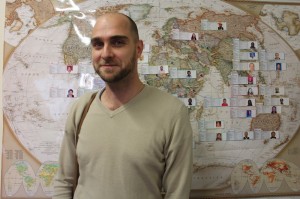The Daily Vox is running a series of blogs written by DR STEFAN KRUGER, who is in Sierra Leone with Doctors Without Borders (MSF) to help combat the spread of Ebola in the region.
Entry 4: Â Triage and funerals
The case management centre is a neatly constructed tented village with timber and tin roofed walkways. Orange fencing indicates the path to take. At the one end there is a triage tent where patients are received and divided into “suspect” or “probable” categories, based on their history and apparent risk. There are “suspect” and “probable” tents where patients wait for their blood test results and from there another walkway leads to the “confirmed” area. This is where the majority of patients spend their days, either convalescing or gradually deteriorating. A little further along, in the distance, there is a makeshift mortuary.

Read Kruger’s third entry here.
Doctors without Borders (MSF) is currently working in Sierra Leone, Guinea and Liberia to combat the spread of Ebola across the region. To support this work, go to http://msf.org.za/donate or SMS “JOIN†to 42110 to donate R30. To receive direct updates about Ebola from Doctors without Borders (MSF) SA, e-mail your name to updates@msf.org.za with the subject line “Ebolaâ€.
– Featured image via Sylvain Cherkaoui/Cosmos/MSF

![Ebola outbreak West Africa [msf] [sylvain cherkaoui]](https://www.thedailyvox.co.za/wp-content/uploads/2014/08/Ebola-outbreak-West-Africa-msf-sylvain-cherkaoui.jpg)







